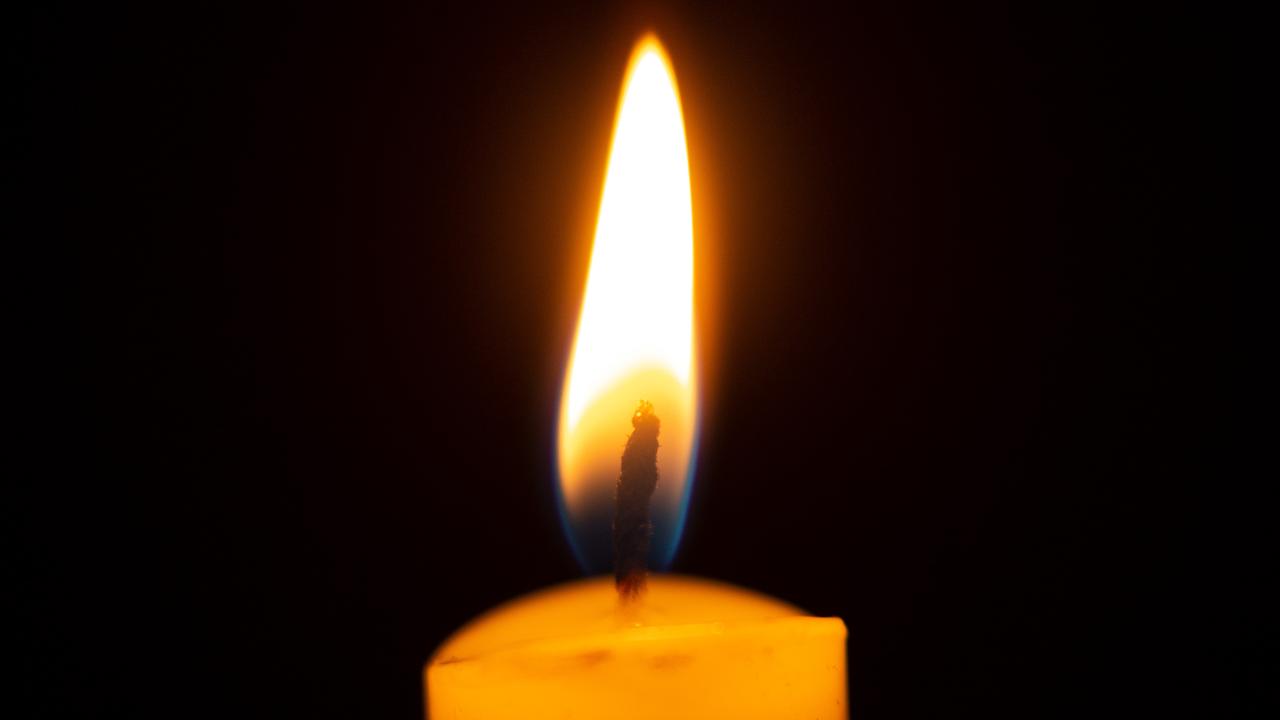SA Digger Private Walter Fathers identified in famous photo of the 11th Battalion of the AIF on the Cheops pyramid in Egypt in 1915
IN a sea of 700-plus army colleagues on the steps of a giant pyramid in Egypt, Private Walter Fathers knew he needed to stand out for a photo. So he moved his arms.

ANZAC Centenary
Don't miss out on the headlines from ANZAC Centenary. Followed categories will be added to My News.
LOST in a sea of 700-plus army colleagues on the steps of the giant Cheops Pyramid in Egypt, Private Walter Fathers knew he needed an edge to stand out.
In a split-second decision, and just as the nervous photographer prepared to snap the iconic shot, he crossed his arms — left over right — as the flash went off.
While most families have trouble identifying their loved ones in the remarkable photograph — an enduring image of Australian involvement in the First Word War conflict taken in early 1915 — Walter’s ancestors have no such difficulty.
His grandson, Paul Fathers from Brighton remembers the photo having pride of place on the walls of his grandfather’s lounge room at Colonel Light Gardens.
“There he is on the steps with a square jawline and a slouch hat,” Mr Fathers, operations manager at Ross Trevor college at Woodforde, said.
In the interactive below, he’s number 117.
“When you look at that photo there is hardly another soldier with his arms crossed exactly the way he did.
“Once you know about his trick you can’t fail to find him.”
Mr Fathers saw The Advertiser’s story in August about efforts by the Western Australian Genealogical Society to identify all 703 of the 11th Battalion of the Australian Imperial Force (AIF) standing on the pyramid.
“I contacted Wags to say grandad was number 489 in their photo,” he added.
“They had him already identified but not verified and with all the family information we had we could do that.”

For Walter the photo — the only piece of war memorabilia the family remembers him displaying — represented a silent reminder of a time of comradeship and bloody conflict that changed the way of the world.
Camped in Egypt before being shipped to the Dardanelles, the 11th infantry were ordered to a nearby landmark, for the group shot..
It was likely the last ever image taken of many of them.
‘After Church this morning the whole Battalion was marched up to the Pyramid (Old Cheops) and we had a photo took or at least several of them,” wrote Captain Charles Barnes in his diary for Sunday, January 10, 1915.
Born at Bunyip near Longwarry Victoria, in June 1894, Walter, the eldest of 10 children of George and Ada Fathers, was living in Western Australia when he enlisted, aged 20, just a fortnight after Australia joined the war in Europe in September 1914.

Another three brothers, Eugene (Gerry), Ernest (Ern) and Albert followed his lead and given the fearful odds of survival the family was grateful they all returned to Australia.
The 11th Battalion set sail from Fremantle on the SS Ascanius in November 1914.
Of the 117 men of Walter’s G Company, 105 men were casualties, killed, wounded or discharged sick by war’s end.
Walter saw action at Gallipoli and was in the first contingents to land at dawn at Anzac Cove on April 25, 1915.
His battalion lost 57 men in that first dreadful day among a total of 620 Aussies killed.
Transferred out early from Gallipoli suffering illness he returned to the hellhole when fit before moving on to the killing fields of the Western Front that saw horrific slaughter in fearsome trench warfare.
Walter joined the army as a private but became a signaller as a member of HQ Signals 11th Battalion.
He was promoted to Lance Corporal in September 1917 and promoted to Corporal in August 1918.
A week later he suffered his first major wound with a gunshot to his left shoulder at St Germain Woods in France.
It proved to be his final day of action.
Shipped back to England for treatment and recovery, he returned home to Australia on the SS Nevasa and was discharged in Perth in June 1919.
It was the hot dry South Australian climate that enticed Walter and his brother Ern to cross the Nullarbor and settle in Adelaide.
Walter had been gassed in the war and decided his health would be better served in Adelaide.
A printer by trade before the war he gained work as a clerk and later worked for Turner Butchers as a book keeper until his retirement.
He was known as a whiz with numbers and able to make complex calculations very quickly.
Walter married Janet Mary McRae on a splendid summer’s day in 1925 and they had three children, Allan, Kim, and the youngest and only daughter, Jean.
“Grandpa was a very gentle, quiet and reserved man who I remember pottered around his house, tended his garden and tinkered in his shed,” Paul, who visited the battle fields of Europe and attended the dawn service at Gallipoli this year, with wife, Diane, said.
“He made me a blue hulled yacht for my 11th birthday, hand carved with a canvas sail — made with love.
“He never talked about the war.
“His sons say he was ‘nervy’ and we can only imagine what he experienced during his army service for almost five years through Gallipoli and the Western Front.”
Walter Fathers died, aged 86, on July 24, 1980 in his adopted town of Adelaide.
Solving the mystery of a famous photograph
Researchers conducting one of Australia’s greatest historical detective investigations have identified 60 previously nameless war heroes and debunked more myths about the iconic Cheops Pyramid photo.
The famous picture shows 703 Australian soldiers posing on the steps of the huge Egyptian pyramid, shortly before they were shipped off to Gallipoli in 1915. It was their last photo together. For a century, most of the faces have been unidentified, and the picture has been best known for the myths attached to it — such as the “Disguised Dead Digger” theory and the persistent story that a father and his sons near the front all died together on April 25.
The Sunday Mail published the story of the myths in August and urged today’s Australians to help identify their ancestors — giving a list of names of those who could be there and colourising the men who had already been named.
Since then, a flood of new leads has poured in to the team leading the research at the Western Australian Genealogical Society (WAGS), resulting in about 60 new identifications, including Pte Walter Fathers.
The WAGS team have now identified 208 men and are hoping for more by the time of the photo’s anniversary — which will be marked by a gathering of ancestors in WA.
If you think an ancestor may have been present, we can help. We are running a full list of the battalion’s roll online — click here and search for your family name.
If you think you can help identify a relative, contact the team at WAGS


